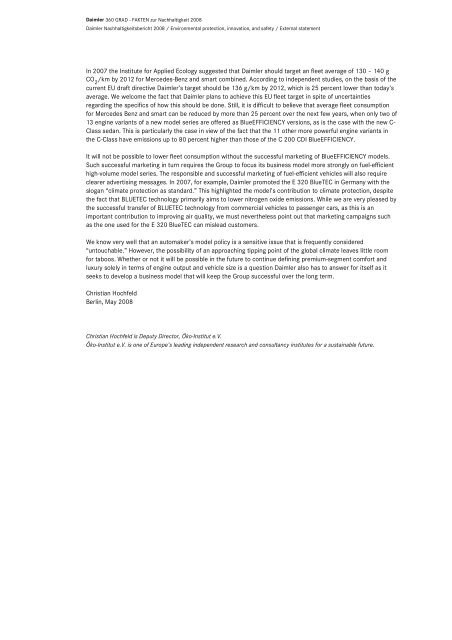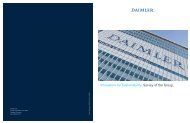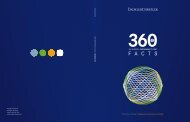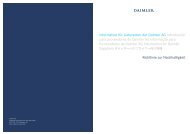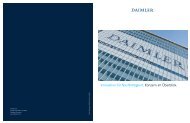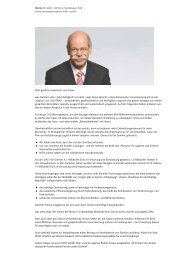Dear readers, This report describes what Daimler means by ...
Dear readers, This report describes what Daimler means by ...
Dear readers, This report describes what Daimler means by ...
You also want an ePaper? Increase the reach of your titles
YUMPU automatically turns print PDFs into web optimized ePapers that Google loves.
<strong>Daimler</strong> 360 GRAD - FAKTEN zur Nachhaltigkeit 2008<br />
<strong>Daimler</strong> Nachhaltigkeitsbericht 2008 / Environmental protection, innovation, and safety / External statement<br />
In 2007 the Institute for Applied Ecology suggested that <strong>Daimler</strong> should target an fleet average of 130 – 140 g<br />
CO 2 /km <strong>by</strong> 2012 for Mercedes-Benz and smart combined. According to independent studies, on the basis of the<br />
current EU draft directive <strong>Daimler</strong>’s target should be 136 g/km <strong>by</strong> 2012, which is 25 percent lower than today’s<br />
average. We welcome the fact that <strong>Daimler</strong> plans to achieve this EU fleet target in spite of uncertainties<br />
regarding the specifics of how this should be done. Still, it is difficult to believe that average fleet consumption<br />
for Mercedes Benz and smart can be reduced <strong>by</strong> more than 25 percent over the next few years, when only two of<br />
13 engine variants of a new model series are offered as BlueEFFICIENCY versions, as is the case with the new C-<br />
Class sedan. <strong>This</strong> is particularly the case in view of the fact that the 11 other more powerful engine variants in<br />
the C-Class have emissions up to 80 percent higher than those of the C 200 CDI BlueEFFICIENCY.<br />
It will not be possible to lower fleet consumption without the successful marketing of BlueEFFICIENCY models.<br />
Such successful marketing in turn requires the Group to focus its business model more strongly on fuel-efficient<br />
high-volume model series. The responsible and successful marketing of fuel-efficient vehicles will also require<br />
clearer advertising messages. In 2007, for example, <strong>Daimler</strong> promoted the E 320 BlueTEC in Germany with the<br />
slogan “climate protection as standard.” <strong>This</strong> highlighted the model’s contribution to climate protection, despite<br />
the fact that BLUETEC technology primarily aims to lower nitrogen oxide emissions. While we are very pleased <strong>by</strong><br />
the successful transfer of BLUETEC technology from commercial vehicles to passenger cars, as this is an<br />
important contribution to improving air quality, we must nevertheless point out that marketing campaigns such<br />
as the one used for the E 320 BlueTEC can mislead customers.<br />
We know very well that an automaker’s model policy is a sensitive issue that is frequently considered<br />
“untouchable.” However, the possibility of an approaching tipping point of the global climate leaves little room<br />
for taboos. Whether or not it will be possible in the future to continue defining premium-segment comfort and<br />
luxury solely in terms of engine output and vehicle size is a question <strong>Daimler</strong> also has to answer for itself as it<br />
seeks to develop a business model that will keep the Group successful over the long term.<br />
Christian Hochfeld<br />
Berlin, May 2008<br />
Christian Hochfeld is Deputy Director, Öko-Institut e.V.<br />
Öko-Institut e.V. is one of Europe’s leading independent research and consultancy institutes for a sustainable future.


